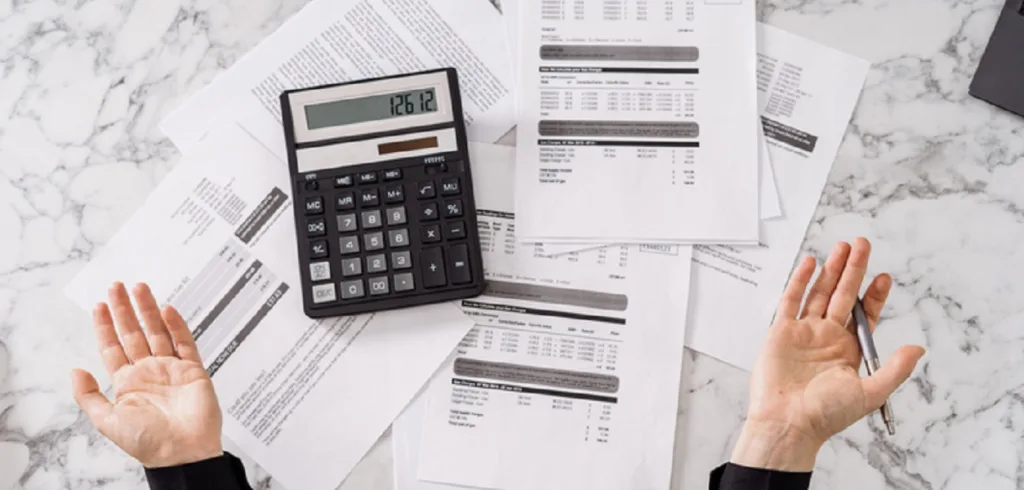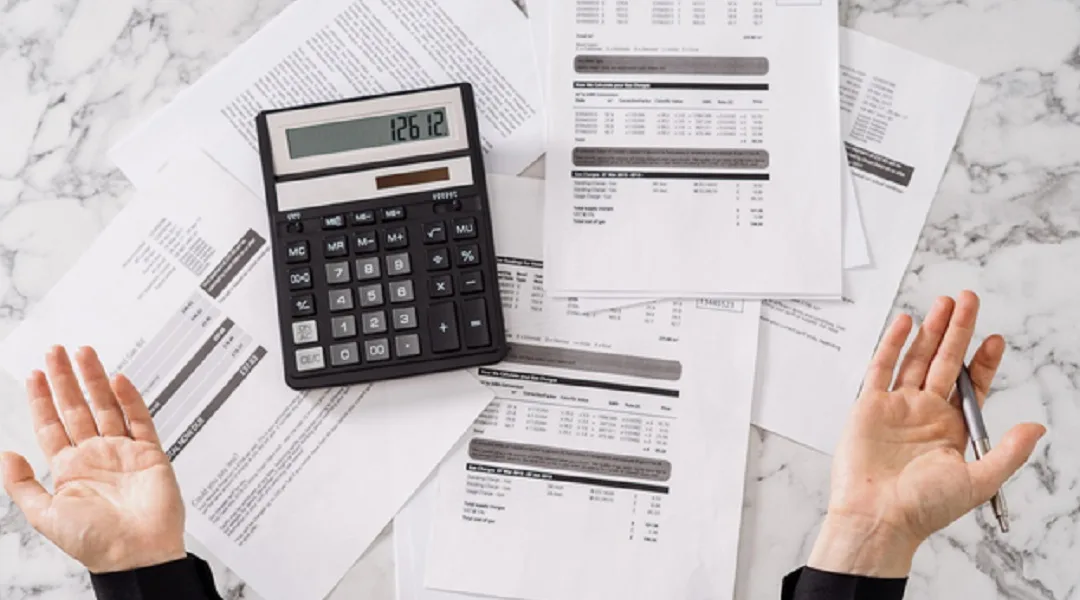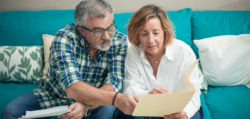
As we noted last week, it’s easy to get basic super rules wrong. It doesn’t matter much if this is in a quiz. But if you make a mistake with your own money, that can be painful. There are two different contribution rules which can be used to significantly boost your super and subsequent retirement income. These are Downsizer contributions and the Bring Forward rules.
But they are frequently confused with each other and often difficult to understand.
Today we share a short explanation of each of these rules and how they may benefit your retirement income management.
What are Downsizer contributions?
A Downsizer contribution allows you to make a one-off superannuation contribution post-tax, up to $300,000 per individual.
Downsizer contributions were created in part to encourage retirees to free up larger homes for younger families as well as help retirees boost their super. The legislation was introduced in 2018 and allowed those aged 65 or over to sell a home and use part or all of the proceeds to top up their super. The theory was that larger homes would then become more available for younger families while older Australians would ‘downsize’ to smaller residences. The incentive lay in the ability for the older vendors to contribute large amounts to their super. If they were drawing down a retirement income stream no tax would be paid on this money. Since the legislation was introduced, the age of eligibility has been lowered to 60 (1 July 2021) and it’s now 55 (since 1 January 2023).
Does this apply to any all properties?
This contribution can only be used for proceeds from the sale of your principal residence
Who can use the Downsizer contribution?
There are restrictions on those who can use the downsizer contribution. You must be aged 55 or older, a resident of Australia and have owned your home for 10 years or more. There may also be CGT requirements that must be met.
Do you need to move to a smaller home?
Whilst the assumption was that this legislation would be used by older Australians to sell ‘family’ size homes and then move to smaller, more manageable dwellings, there is no requirement to purchase a smaller property. You can upsize, downsize or rightsize as you see fit. The legislation is not prescriptive about your next property.
How does this work for couples?
The legislation allows for a contribution of $300,000 per individual, so this means couples can contribute up to $600,000 combined. This could of course impact Age Pension eligibility If however there is a younger partner below Age Pension age then there could be the opportunity to enhance Age Pension eligibility for an older partner, using the specific Younger Partner rules.
Are there time or upper age limits?
You must make your Downsizer contribution within 90 days of receiving the proceeds of sale, which is usually at the date of settlement. (You must also use a downsizer contribution form).
Whilst there are no upper age limits, it’s worth remembering that you can only use this type of contribution once.
What are Bring Forward Rules?
Bring Forward rules are not linked to the sale of a property. Whilst these rules are different from Downsizer contributions, they can, in some cases, be used in combination to contribute large sums to your super.
The Australian Taxation Office (ATO) refers to these rules as the ‘Bring-forward arrangement’ which applies to the non-concessional contributions cap, or the maximum amount of after-tax contributions you can contribute to your super each year without contributions being subject to extra tax. From 1 July 2021, the non-concessional contributions cap is $110,000.
Those who wish to make contributions above the annual non-concessional contributions cap can use the Bring Forward arrangement to gain access to future year caps. Using the Bring Forward legislation allows you to make non-concessional contributions of up to three times the annual non-concessional cap in that financial year, $110,000 by three times, totalling $330,000.
Who is eligible?
Eligibility for the Bring Forward arrangement is determined by
- your age
- your total super balance on 30 June of the previous financial year. You can’t take advantage of this if your super balance exceeds the transfer balance cap – currently $1.9m for the 2023/24 financial year.
Here is a link to further terms and conditions, including what happens if you are over 75.
How do these two rules work together?
Bring Forward arrangements can also be used after the sale of the family home. They can be combined with Downsizer contributions which allow you to make a one-off superannuation contribution post-tax, up to $300,000 per individual. Combining Bring Forward and Downsizer allowances means an individual may be able to contribute up to $630,000 in any one year. But it is important to check all possible implications, including taxation. Additionally, the use of either or both these rules may lead to Centrelink means test ramifications if you receive or hope to receive an Age Pension. Our Understanding more about Super consultations can help with this.
Are there any downsides?
Yes, these rules will allow for larger than usual superannuation contributions. But they can only be used in certain circumstances and have specific terms and conditions attached. It’s therefore important that any use of these rules aligns with your long term income goals. In particular, if you are part of a couple, it may be that your age and Age Pension status will play a role in determining the efficacy of using either the Downsizing contribution or the Bring Forward arrangement, or both.
Both these allowances could help you fund a much more comfortable retirement lifestyle. But the rules can be confusing, so if you are thinking about using either or both of these options, you may wish to discuss your plans in a consultation with one of our experienced advisors. Many Retirement Essentials members report a great sense of relief when they have worked through the rules with our team and can then move forward, confident in their own decision-making.
Other pros and cons of downsizing
Have you considered using either the Downsizer contribution or the Bring Forward rules?
On the face of it, they both allow for major contributions towards your retirement income.
Would either work for you?
This article is provided by Retirement Essentials Representative Number: 001260855. We are an authorised representative of SuperEd Pty Ltd ABN 88 118 480 907 AFSL #468859. This information is not intended as financial product advice, legal advice or taxation advice. It does not take into account your personal situation, goals or needs and you should assess your own financial situation, consider if the information is suitable for you and ensure you read the relevant Product Disclosure Statement (PDS) if you choose to make any changes to your financial situation. It is always advisable to consult a financial adviser before making financial decisions.






What if you upsize to a more expensive house then become eligible for age pension ??
For example :
At present, living in a $1 million house and have say $1 million in super.
Sell the house and buy one for say $1.6 million.
Then become eligible for full aged pension from centrelink.
Would that be OK from centrelink’s point of view ??
Hi John, thanks for picking our brains! Yes this is ok from Centrelink’s point of view, you would not get into any trouble with them or suffer any penalty to your Age Pension.
If the property is not in both names (married and residing together for 12 years) can we contribute to our superannuation $300k each?
Hi Chris, Thanks for your question! Yes, it’s likely that you can. In fact, if you refer to the ATO website here it specifically states “If your home was only owned by one spouse and was sold, the spouse that did not have an ownership interest may also make a downsizer contribution, or have one made on their behalf, provided they meet all of the other requirements.”
Remember though, it may not be the only contribution type that you can access, and often may not be the best one depending on your situation. If you want to discuss your options in more detail you can book an appointment by clicking here, and you can the pros and cons of each choice with us. Best of luck! Nicole.
I have sold my home and am not eligible to make down size contributions to my super as I have not lived in it for 10 years . I am a pensioner who works part time . I will be looking at buying a smaller unit . Would it be wise to put the left over funds in my super or bank account . I only have 30k in super
Hi Diane, Thanks for your question! Regarding the leftover funds, it really depends on what you need them to do for you over the long term. If you are looking at options for supplementing your age pension with additional income in retirement, then often superannuation may be a good choice. If you are looking to park it so you can draw down lump sums in case of an emergency, like keeping a bit of a nest egg, then super may or may not be the best thing. It also doesn’t have to be all or nothing – it could be a combination of both! Although you may not be eligible to make a downsizer contribution, you may still have capacity to contribute under other contribution rules if you are under 75. To look more closely at what may work best for you, we would be happy to work through your questions and the benefits and downsides of each option in a General Consultation. You can book by clicking here. Best wishes, Nicole
You mention eligibility requirements under the bring forward section (age and super balance). Does the downsizer contribution also have the same total super balance requirement (ie can the downsizer contribution be made even if the total super balance is $1.9m)? All still in accumulation phase.
Hi Ivan, thank you for reaching out for additional information. The Downsizer contributions do have special criteria’s to meet however, they are separate to Non-Concessional contribution caps and don’t have the same Total Super Balance (TSB) Cap of $1.9m restriction. Hope this helps you. Thanks, Megan.
Is one able to use the downsizer contribution even if my total super balance is at the $1.9m limit? This is in accumulation phase.
Hi Ivan, thank you for reaching out for additional information. The Downsizer contributions do have special criteria’s to meet however, they are separate to Non-Concessional contribution caps and don’t have the same Total Super Balance (TSB) Cap of $1.9m restriction. Hope this helps you. Thanks, Megan.
Hello
Is there an age limit associated with the bring forward rule? My husband is 71 and we want to put money into his super account.
Hi Jan, good question. The rules changed a few years ago to make it easier to contribute to super. The rules outlined by the tax office state that subject to your specific super fund having any age-related and other restrictions on the types of non-concessional contributions your fund may be able to accept, if you’re under 75 years of age at any time in a financial year, you’re eligible to use the bring-forward arrangement in that financial year.
We are happy to help you with your scenario if you would like to discuss how to make best use of your superannuation to provide the financial resources for your annual spending in your retirement years. If you would like to discuss further with one of us, these consultations to learn more about your super can be booked here
What about single people on age pension I own my unit and wish to move to a better area, if I have money left over to put into my super will that afffect anything with Centrelink. I only have a small amount in my account. Regards Kristina Booth
Hi Kristina, thanks for reaching out. Any funds that are leftover once your new home purchase is complete will be assessed as an asset. However, this doesn’t always mean that your pension will reduce, it depends on how much is leftover as well as how much you have in other assets. You can use the age pension eligibility calculator, available by clicking here, to take a look at what your situation may look like once you increase your super balance. Alternatively, if you want to speak with someone directly regarding how different purchase prices impact your age pension entitlement I recommend a consultation where we can discuss this in detail. You can book this by clicking here. Best wishes, Nicole.
Hi Kristina, thank you for your question! If you have money left over then it may impact the amount of Age Pension you receive. As a single home-owner, your Pension will reduce by $3 for every $1,000 you have in excess of $301,750. If you remain under that threshold then you will still receive the full pension.
My wife purchased a property 19 years ago and lived in it by herself until we were married 17 years ago and we lived together in another property. She has retained her origal home as a rental property. If she sells this property she clearly qualifies for the $300,000 downsizer contribution but do I qualify for a spouse contribution even though I never lived in that property.
Hi Gordon, thanks for reaching out. The ATO contains details here on eligibility for a spouse to make a super contribution, stating “If your home was only owned by one spouse and was sold, the spouse that did not have an ownership interest may also make a downsizer contribution, or have one made on their behalf, provided they meet all of the other requirements.” I would strongly encourage you to discuss the transaction with your tax specialist to confirm that you satisfy the additional CGT-exemption and other requirements before taking any action, and take a look at the Downsizer contribution form (which your super provider should be able to give you) to check on the information required when making the contribution. Best wishes, Nicole.
With regard to the Non-Concessional contribution limits, can I contribute into my Super accumulation account in the following manner without incurring any problems from the ATO or anybody else?
Contribute $110,000 in mid June of Financial year 2023/2024 and then use the Bring Forward Rule in order to contribute another $330,000 in mid July of Financial Year 2024/2025. Therefore, I manage to contribute $440,000 in a short period of time.
I do realize that this negates me from contributing anymore Non-Concessional contributions until July 2027.
Hi Jeremy, thanks for posting your query! It would be best to book a consultation with one of our advisers to get clarity on the rules and the pros/cons of your proposed strategy. CLICK HERE to make a booking.